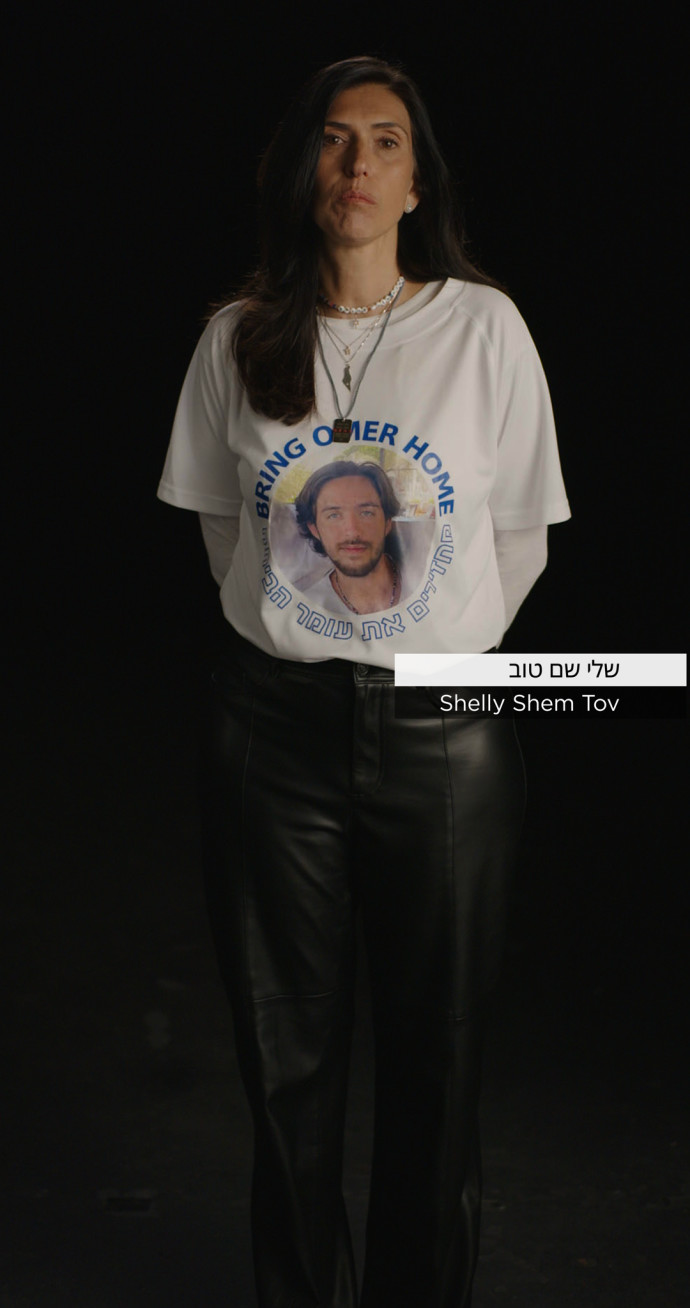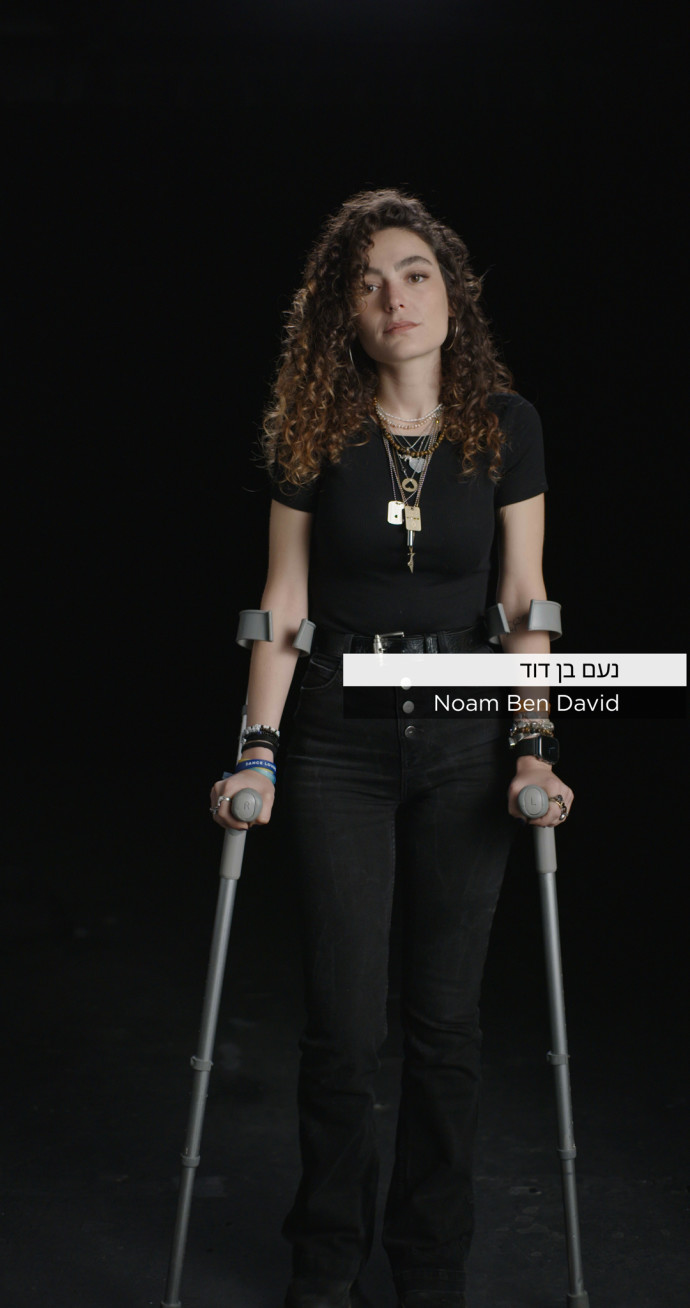‘From Darkness to Light’: Museum of Tolerance Jerusalem’s pioneering exhibition on Oct. 7

The new exhibition is designed to raise awareness of what happened on Oct. 7 around the world and promote greater appreciation of the consequences and impact of the attack on Israel.
For more than six months, Israeli media producer and CEO of AVS Creative Visual Solutions Malki Shem Tov has been living in a frozen moment in time – 6:29 a.m. on Oct. 7, 2023.
The world as we know it changed in just a matter of minutes when his son, Omer, called him from the Supernova music festival as sirens blared across Israel’s southern and central regions. For two hours, Shem Tov remained in constant contact with his son, unable to help him as he listened to his voice become more panicked with each passing call.
“6:29 – these three numbers have become iconic of the horror that took place on Oct. 7,” Shem Tov says at the Hostage Families Forum Headquarters in Tel Aviv, reliving those moments over and over again for more than half a year. Visibly exhausted yet undeterred, Shem Tov recounts the harrowing series of events that led to Omer’s violent abduction by Hamas as he watched his son’s live location from his cellphone quickly pick up speed toward the Gaza border. This waking nightmare continues to haunt him and thousands of others whose loved ones were killed or taken hostage in what has turned into Israel’s longest war since 1948.
Shem Tov’s worst fears were confirmed when Hamas published a video of Omer, along with his friend Itay, in the back of a pick-up truck being taken to Gaza. He immediately called his cousin attorney Dudi Zalmanovich, and hosted the first meeting of the Hostages and Missing Families Forum in his living room, together with a number of experts who were involved in the release of Gilad Schalit, abducted by Hamas in 2006 and released after five long years in captivity. The forum moved several days later to its headquarters in Tel Aviv.
“It’s really hard as time continues to pass, but we don’t have any other option, and this is the mission of our life. We need to bring Omer and the other hostages back home,” Shem Tov says. “This is what keeps our head above the water, being busy doing all kinds of missions and the daily activities. This helps us, but at the same time we are falling apart. We are exhausted, but we don’t have the option [to rest]. We must have the energy to bring them back home.”
With more than 20 years of experience in creative visual media and cutting-edge technologies, Shem Tov has collaborated with the Museum of Tolerance Jerusalem (MOTJ) to create the first-ever experiential exhibition, “6:29 - From Darkness to Light,” which captures the complex multifaceted impact of a post-Oct. 7 world from the perspective of the women who have experienced the worst tragedies imaginable.
“6:29 – From Darkness to Light” tells the whole story, beginning, middle, and end. “There is nowhere else in Israel that tells the story of what happened, the testimonies, how the light came at the end, and how the entirety of our society has been impacted,” says Jonathan Riss, managing director of the Museum of Tolerance Jerusalem. “Here, we want to show the impact on the individual, not only the atrocities. By our showing the witnesses and how they experienced it, we can bring more than one perspective.
“We felt that after Oct. 7, we must address how Israeli society and Diaspora Jews, together with others, coped with the situation, and there is a need to explain from the beginning to the end to highlight how the lesson of mutual responsibility is essential to the future of Israeli society.”
As part of its mission, MOTJ is dedicated to promoting tolerance and human dignity, while creating a powerful dialogue between individuals from all cultures and religions. The new exhibition fits into that mission by raising awareness about what happened on Oct. 7 around the world and promoting greater appreciation for the impact and consequences of the attack on Israel and the Jewish people.
Shem Tov, along with film directors Noam Shalev and Kobi Sitt, designer Mimi Lam, and photographer Ziv Koren, have curated a captivating and emotionally provocative journey that transcends politics and religion, capturing the difficult and multifaceted experience that transpired since 6:29 a.m. on Oct. 7. Guests are first greeted by 15-year-old Ella Shani. Through Shani’s eyes, visitors hear the gripping account of her once idyllic community of Be’eri, where her father was brutally murdered and her two grandparents were shot by Hamas terrorists.
“What we had in our mind was not just to provide the information of what happened on Oct. 7 but to capture the feelings of what she went through. As a visitor, when you come, you become a part of it. From the moment you enter the exhibition, it is like we are sucking you into this time capsule,” Shem Tov explains, adding that after visitors gain a first-hand perspective of what transpired, they are inundated with the sounds of the red alert and all-too-familiar sounds for most Israelis that will give foreign visitors a real understanding of the panic that transpires in the 30 seconds needed to seek shelter.
As guests are rushed to a simulated small bomb shelter, migunit, where survivors hid out for hours, these miguniot serve as a connector between the “acts,” which provide a small glimpse of the horrors that survivors and victims endured.
The guided experience takes visitors from the shelter into the main hall, the Women of Valor, where 20 life-size projections of women against a bleak dark backdrop recount stories of profound heroism, but also despair, each shared through their own perspectives and myriad of backgrounds representing the often misunderstood cultural mosaic of Israeli society.
“We tried to create a tapestry of women from all walks of life who would share the story of Oct. 7 and the following days. We started with the women on the [front lines] – soldiers, police officers, and medical professionals,” explains director Shalev. “Together, it is an impressive collection of the female voice from Oct. 7. We really covered as much as we could to tell a full-bodied narrative from the women’s perspective.”
The others represent all kinds of backgrounds, such as Mirjam Beit Talmi, an 88-year-old Holocaust survivor in Zikim; and Nasreen Yusuf, a Druze living in the Negev, who helped the first security units identify terrorists in the area; as well as grieving mothers like Ricarda Louk, whose daughter Shani became emblematic of the atrocities committed against women as the photo of her limp body in the back of a pick-up truck circulated media outlets around the world.
But out of the darkness comes a shining beacon of light, a symbol of Jewish resilience and the cohesion of the greater Israeli society. The interactive third act of the exhibition brings visitors into the light and showcases Arevut, the Jewish concept of mutual responsibility, offering a dedicated space for people to express their hopes and personal feelings through colorful Post-it notes that are illuminated underneath a unique ultraviolet black light.
“We may be the smallest nation you know, but the biggest family that any nation has. If you look at it, there is no other nation that we know of in modern history where you see such a collaboration from all walks of life,” says Riss.“We have Israelis and Diaspora Jews working together, but that light is not only Am Yisroel [the nation of Israel]. You have Bedouin, Arabs, Muslims, Christians, even the American cowboys who came together. It is an extended family.
We are defining the spine of the future Israeli society. People will remember how they all worked together when these atrocities happened.”
MOTJ views the exhibition as a tool for the Foreign Ministry to use to educate the world about the events of Oct. 7 and the resilience that emerged within Israel and the Jewish nation at large.
The “6:29 – From Darkness to Light” exhibition was officially inaugurated by President Isaac Herzog, alongside Museum of Tolerance co-chairs Larry Mizel and Rabbi Marvin Hier, on Thursday. In attendance were some of the women featured throughout the exhibition, as well as 300 students from Jerusalem and the surrounding region, which included religious and secular students, Bedouin, Christians, and Muslims.
>> The exhibition opens to the public on May 20. Tickets can be purchased at motj.org.il.
Jerusalem Post Store
`; document.getElementById("linkPremium").innerHTML = cont; var divWithLink = document.getElementById("premium-link"); if (divWithLink !== null && divWithLink !== 'undefined') { divWithLink.style.border = "solid 1px #cb0f3e"; divWithLink.style.textAlign = "center"; divWithLink.style.marginBottom = "15px"; divWithLink.style.marginTop = "15px"; divWithLink.style.width = "100%"; divWithLink.style.backgroundColor = "#122952"; divWithLink.style.color = "#ffffff"; divWithLink.style.lineHeight = "1.5"; } } (function (v, i) { });


